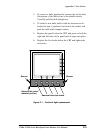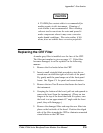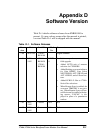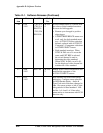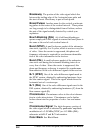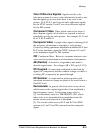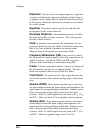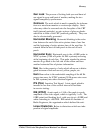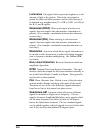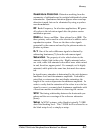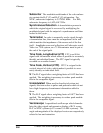
Glossary
G-2
1740A/1750A Series Waveform/Vector Monitor User Manual
Breezeway The portion of the video signal which lies
between the trailing edge of the horizontal sync pulse and
the start of burst. Breezeway is part of back porch.
Broad Pulses Another name for the vertical synchroniz-
ing pulses in the center of the vertical interval. These pulses
are long enough to be distinguished from all others, and are
the part of the signal actually detected by vertical sync
separators.
Bruch Blanking (PAL) A 4--field burst blanking se-
quence employed in PAL signals to ensure that burst phase is
the same at the end of each vertical interval.
Burst (NTSC) A small reference packet of the subcarrier
sine wave, typically 8 or 9 cycles, which is sent on every line
of video. Since the carrier is suppressed, thi s phase and
frequency reference is required for synchronous demodula-
tion of the color information in the receiver.
Burst (PAL) A small reference packet of the subcarrier
sine wave sent during the horizontal blanking interval on
every line of video. Since the carrier is suppressed, this
phase and frequency reference is required for synchronous
demodulation of the color difference signals in the receiver.
B--Y (NTSC) One of the color difference signals used in
the NTSC system, obtained by subtracting luminance from
the blue camera signal. This is the signal which drives the
horizontal axis of a vectorscope.
B--Y (PAL) One of the color difference signals used in the
PAL system, obtained by subtracting luminance (Y) from the
blue camera signal (B).
Chrominance Chrominance refers to the color informa-
tion in a television picture. Chrominance can be further
broken down into two properties of color: hue and sat ura-
tion.
Chrominance Signal The high--frequency portion of
the video signal which is obtained by quadrature amplitude
modulation of a 3.58 MHz (NTSC) or 4.43 MHz (PAL)
subcarrier with R--Y and B--Y information.
Color Black See Black Burst.



